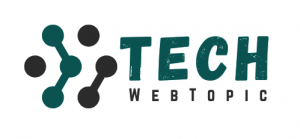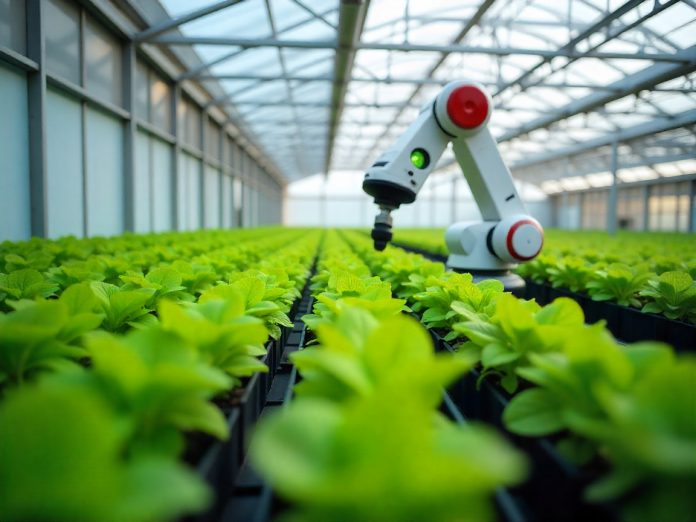As we are getting digitized with each passing day, we are familiar that IoT technologies are spreading in each and every sector. Once dependent on guesswork, intuition and manual labour, farming today is increasingly guided by data, automation, and connected devices.
At the center of this transformation lies the Internet of Things (IoT) applications development , a network of smart sensors,devices, and platforms that communicate in real time to optimize agricultural practices.
These IoT devices help farmers in monitoring soil health and tracking livestock movements, IoT is not just making agriculture smarter, it’s making it more sustainable, efficient and profitable.
Let’s dig deep and know what are the top 10 IoT technologies transforming agriculture today.Happy Reading!
What are the top 10 IoT technologies transforming agriculture today?
The agriculture sector today has been revolutionised with smart devices, which monitor soil health, automation irrigation systems, capturing soil health with aerial imaging and drones. Let’s know the top 10 IoT smart sensors that are reshaping the agriculture sector and making the future ready.
1. Smart Sensors For Soil & Crop Monitoring
The vegetables we intake in our daily life are being grown with much manual work, which takes lots of months to grow and monitor everyday. In traditional days farmers were more frustrated with doing these activities daily and they may feel lazy to do so. But as we are moving forward with fast digitalization, the agriculture sector is becoming more advanced.
As we know soil and crop conditions are the foundations of farming success. IoT enabled sensors collect real time data on soil moisture, nutrient levels, temperature and pH balance.
Farmers can use this data to:
- By ensuring over or under irrigation.
- Detects nutrients deficiency early.
- Improving fertilizing efficiency.
- Prevent soil degradation.
These insights will lead to higher yields while conserving water and fertilizers, lowering costs and reducing environmental impact.
- Automated Irrigation Systems
We are familiar that there are still some rural areas where water scarcity is treated as severe challenges, which also impacts farm fields. Have you ever imagined that someday farmers don’t have to worry for water, as automated irrigation systems can do so with collecting even the waste water? But yes it can be possible now as automated irrigation systems use data from soil sensors and weather forecasts to deliver just the right amount of water, when and where it’s needed. It welcomes numerous benefits:
- Water conservation by reducing waste.
- Precision irrigation that adapts to plant needs.
- Reduced energy use compared to traditional methods
Automated drip systems such as can cut water usage by up to 30-50% while boosting crop quality.
3. Drones and Aerial Imaging
Are you aware that now it is as simple to monitor the farm fields, whether they are any pest infection spreading, are your crops growing as you wanted them to be? As per the census report, between 2018-2025, the global drone market size skyrocketed over billion U.S. dollars in 2025. In the coming years, the revenue generated by this market is expected to keep growing, amounting to around 5 billion U.S dollars by 2030.
We can say that IoT connected drones are becoming farmers’eyes in the sky”. Equipped with cameras and multispectral sensors, drones can:
- Map fields and details
- Detect pest infestations or diseases before they spread
- Monitors overall health of plant
- Assess irrigation coverage
When irrigated into IoT platforms, drones deliver actionable insights for large scale precision farming.
4. Livestock Tracking & Health Monitoring
Like we listen to our favorite playlist everyday, without skipping any trendy song updates. Farmers can also do the same for monitoring farm fields, they can easily monitor their herds in real time through IoT- enabled wearables and ear tags. These devices basically helps in tracking:
- Location and movement patterns.
- Feeding and grazing habits
- Health indicators like temperature or heart rate.
- Fertility cycles and birthing alerts.
This technology enhances the agriculture sector, by reducing labour work to an extent, improves animal welfare, and prevents disease outbreaks that could cause significant losses.
5. Climate & Weather Stations
In earlier days farmers always feared flooding due to rain, or any weather conditions which are challenging to know before. But now there are IoT powered solutions which can provide hypothetical data about weather conditions, including:
- Rainfall levels
- Wind speed and direction
- Temperature and Humidity
Farmers can now easily use this data to timely planning, irrigation and harvesting more effectively, reducing risk from droughts, storms, or frost.
6. Smart Greenhouses
The global smart greenhouses market is expanding with strong growth, with various reports projecting it to grow from approximately $2.2 billion to $ 2.7 billion in 2024-2025 and reach values between $ 3.7 billion and over $5 billion by 2030-2031. This means it’s a fast moving ratio. Greenhouses are evolving into fully automated systems. IoT enabled smart greenhouses use sensors and AI driven controls to regulate:
- Temperatures Humidity
- CO2 concentration
- Lightning and Shading
The result is optimized plant growth with minimal manual input, leading to year around productivity and reduced reliance on unpredictable external weather.
7. Autonomous Tractors and Farm Equipment
Farm fields come up with more manual labours, machines, and equipment.This also impacts costs and time. But as self-driving cars like Tesla have been introduced, the people are more curious to know about every technology the engineers and innovators have used. To reduce manual work and costs the IoT powered solutions systems have introduced self driving tractors, planters, harvesters connected to IoT platforms are making farming more efficient than ever. These machines can:
- Follow GPS-guided paths
- Automated Seeding, Plowing, and Spraying
- Collect and Transmit performance data
This reduces labour dependency while increasing consistency and precision in farming operations.
8. Supply Chain and Cold Storage Monitoring
Post harvest losses are a major challenge, especially in developing or rural regions. IoT technologies ensures crops stay fresh from farm to market by monitoring:
- Temperature and humidity in storage facilities
- Transit conditions using GPS and IoT trackers
- Real time alerts for spoilage risks
This helps in reducing wastage of food, ensures quality, and improves profit for farmers.
9. Pest & Disease Detection Systems
Early detection is the key to minimizing crop losses. IoT enabled solutions such as AI powered cameras, smart insect traps and biosensors can:
- Detect pest infections
- Identify early signs of plant diseases
- Alert farmers instantly through mobile apps.
This reduces dependence on chemical pesticides while protecting crops more effectively.
10. Farm Management Platforms and Data Analytics
Perhaps the most powerful application of IoT in agriculture is data integration. Cloud based platforms collect information from sensors, drones, and farm equipment, giving farmers a 360 degree view for their operations. Which commonly includes:
- Real time dashboards for monitoring
- Predictive analytics for yield forecasting
- Automated task scheduling
- Cost and Resource management
This platform trunks raw data into actionable insights, enabling smarter and faster decisions making.
Challenges of IoT in Agriculture
While IoT technologies are transforming agriculture, their adoption is not without obstacles. Farmers often face challenges related to high cost, infrastructure, data security and skills.
1. High Initial Investment
Including IoT devices in the agriculture sector brings more high initial investments such as drones, smart sensors, and automated machinery that require substantial upfront costs. Small and marginal farmers might find these technologies unaffordable without subsidies, financing options, or shared ownership models.
2. Limited Connectivity in Rural Areas
We are familiar that due to low connectivity issues in backward areas are still priority problems, which impacts they are still 10 years back. Poor Infrastructure hampers real time data collection and device communication, reducing the effectiveness of IoT systems.
3. Data Management & Integration Issues
IoT systems generate massive amounts of data. Farmers often struggle to store and manage large datasets, integrate data from different devices and platforms,and interpret insights without advanced analytics tools.
4. Cybersecurity & Data Privacy Risks
As not being fully aware about devices the farmers might easily get connected to devices, they also become vulnerable to cyberattacks, which includes risks such as unauthorized access to farm data, manipulation of automated systems and theft of sensitive supply chain information.
5. Skill Gaps & Farmers Awareness
As not being aware properly, farmers face challenges to use IoT powered solutions which bring interpret dashboards, or troubleshoot connectivity issues. Without proper training and extension services, adoption rates remain low, especially among smallholder farmers.
Conclusion
The IoT in agriculture it’s not all about efficiency, but it’s about sustainability. With the global population which is expected to reach nearly 10 billion by 2050, which means farmers need smarter tools, to produce more food with fewer resources. This will only happen when our farmers are more aware about technologies which will be beneficial to them in numerous ways, from reducing more manual work to lowering the risk of destroying farm lands.
Through leveraging IoT technologies, agriculture is becoming a data driven autonomous, and eco-friendly sector. From soil sensors to self-driving tractors, the innovations are creating a path towards farming that is stronger, profitable, and sustainable.


